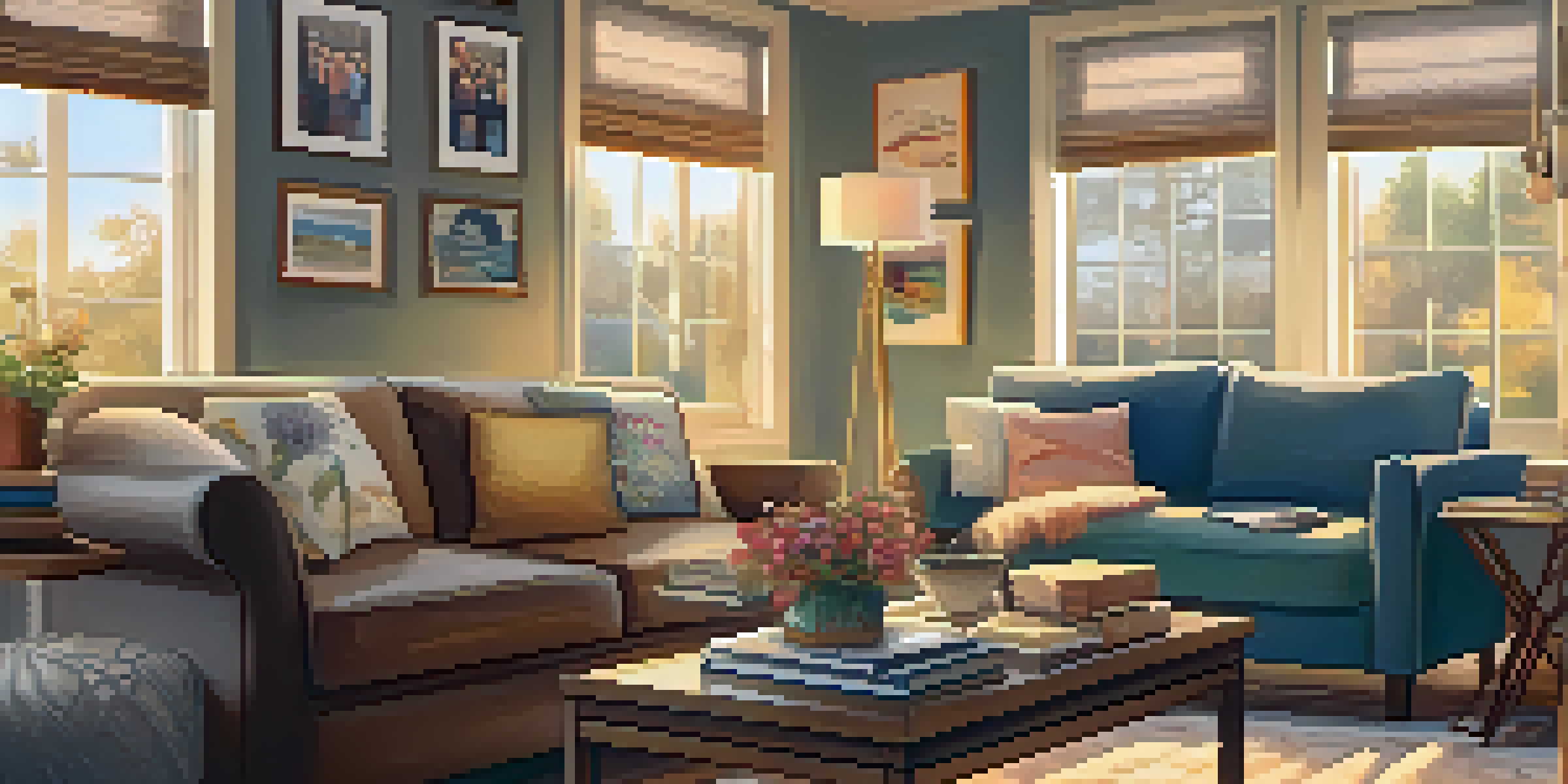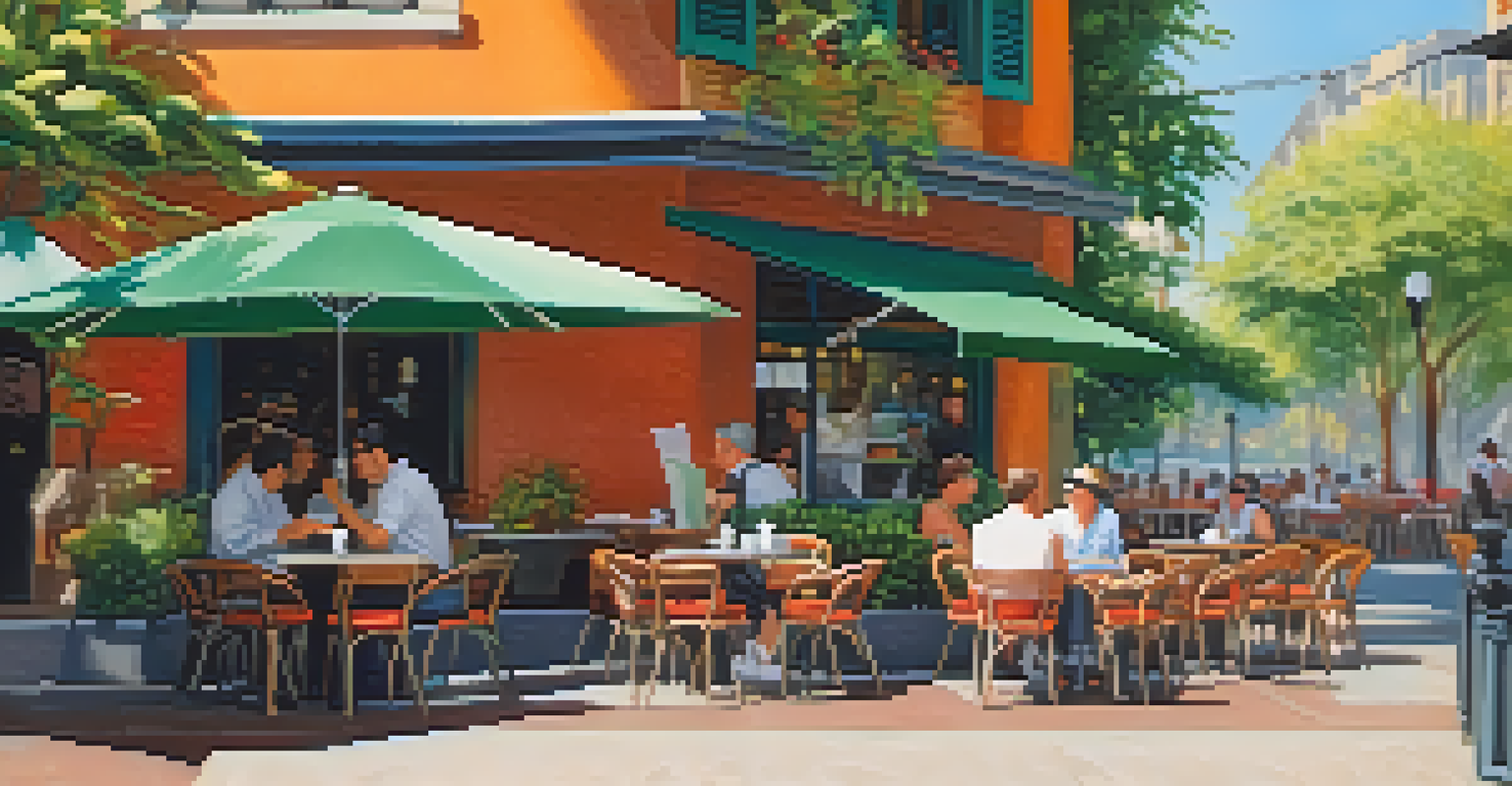The Role of Mise-en-scène in Film Formalism Explained

Defining Mise-en-scène in the Context of Film
Mise-en-scène is a French term that translates to 'placing on stage.' In film, it encompasses everything that appears before the camera, including settings, props, actors, and their movements. This visual composition plays a crucial role in storytelling, as it sets the mood and tone for the audience.
Cinema is a matter of what's in the frame and what's out.
Imagine walking into a beautifully decorated room; the arrangement of furniture and decor tells you a lot about the inhabitants' personalities and emotions. Similarly, the mise-en-scène in a film can convey themes and character traits without a single word being spoken. It can evoke feelings of joy, tension, or melancholy through visual cues.
Ultimately, mise-en-scène is not just about aesthetics; it's a powerful storytelling device that shapes how viewers perceive and interpret a film. By understanding its role, we can appreciate the intricacies behind our favorite movies.
The Elements of Mise-en-scène: Breaking It Down
Mise-en-scène is composed of several key elements: setting, lighting, costume, makeup, and staging. Each of these components works in harmony to create a cohesive visual experience. For instance, a dimly lit room filled with shadows might suggest mystery or danger, while bright colors can indicate happiness and warmth.

Think of a classic horror film where the setting is a decrepit old house. The choice of location, combined with eerie lighting and unsettling sound effects, sets the perfect backdrop to instill fear in the viewer. Each element of mise-en-scène contributes to building this atmosphere, enhancing the overall narrative.
Mise-en-scène Shapes Storytelling
Mise-en-scène encompasses all visual elements in film, influencing mood and tone to enhance storytelling.
By analyzing these individual components, filmmakers can manipulate the audience's emotions and reactions. It's like a painter choosing colors and brush strokes to evoke specific feelings in their audience—each decision is deliberate and impactful.
How Mise-en-scène Influences Character Development
Mise-en-scène also plays a significant role in character development. The way a character is dressed, their posture, and even their positioning within a scene can reveal much about their personality and state of mind. For example, a character in disheveled clothing might signify turmoil or inner conflict.
The camera is a private eye. It doesn’t give you the whole picture, it only gives you what it wants you to see.
Consider the film 'The Great Gatsby.' The opulent costumes and extravagant settings illustrate the characters' wealth and social status, but they also hint at deeper issues such as emptiness and disillusionment. The mise-en-scène works hand in hand with character arcs, providing visual context to their journeys.
As viewers, we pick up these subtle hints, often without realizing it. This immersive storytelling draws us deeper into the narrative, making us more invested in the characters' fates.
The Relationship Between Mise-en-scène and Film Formalism
Film formalism emphasizes the formal elements of a movie, such as its structure, style, and technical aspects. Mise-en-scène is an integral part of this approach, as it focuses on how visual elements shape the narrative. By analyzing mise-en-scène, we can understand the artistic choices filmmakers make to convey meaning.
For instance, a film like 'Blade Runner' uses mise-en-scène to establish a dystopian world through its set design, lighting, and overall visual style. The choices made in these areas contribute significantly to the film's themes, such as isolation and technological advancement.
Elements Create Emotional Impact
Key elements of mise-en-scène, such as setting, lighting, and color, work together to evoke specific emotions and responses from the audience.
Understanding this relationship allows us to appreciate the creativity and intention behind a film. It highlights how every detail is meticulously crafted to enhance the viewer's experience, making each scene more than just a moment in time.
The Role of Color in Mise-en-scène and Storytelling
Color is a vital aspect of mise-en-scène that can dramatically influence the mood and tone of a film. Different colors evoke different emotions—warm colors like red and yellow can create feelings of excitement or happiness, while cool colors like blue and green can evoke calmness or sadness. Filmmakers strategically use color to guide the audience's emotional responses.
Take the film 'The Sixth Sense,' for instance. The use of muted, desaturated colors throughout the movie heightens the tension and sense of foreboding, reflecting the protagonist's struggles. Each choice in color adds layers of meaning that enrich the viewing experience.
This thoughtful application of color within mise-en-scène allows filmmakers to communicate complex ideas and emotions visually. By tapping into our subconscious associations with color, they create a deeper connection with the audience.
Mise-en-scène and Audience Interpretation
One of the fascinating aspects of mise-en-scène is how it influences audience interpretation. Each viewer brings their own experiences and perspectives to a film, and the visual elements can guide these interpretations in specific directions. A well-crafted mise-en-scène can evoke feelings and thoughts that resonate differently with each person.
Consider a scene from 'Inception,' where the bending cityscape challenges our perception of reality. The mise-en-scène encourages us to question what is real and what is not, leading to rich discussions and analyses among viewers. This engagement transforms the viewing experience into something interactive and thought-provoking.
Visuals Influence Audience Interpretation
Mise-en-scène guides how viewers interpret films, allowing personal experiences to shape their understanding of the narrative.
By understanding how mise-en-scène shapes our interpretations, we can appreciate the art of filmmaking on a deeper level. It opens up conversations about themes, messages, and the impact of visual storytelling.
Final Thoughts: The Power of Mise-en-scène in Film
In conclusion, mise-en-scène is a powerful tool in the filmmaker's arsenal. It encompasses all aspects of visual composition, from setting and lighting to character portrayal and color. By carefully crafting these elements, filmmakers can create immersive experiences that resonate with audiences long after the credits roll.
As we've explored, the relationship between mise-en-scène and film formalism reveals the intentionality behind every frame. Each choice made in the visual presentation contributes to the overall narrative and emotional impact of the film.

So, the next time you watch a movie, take a moment to appreciate the mise-en-scène. Consider how it shapes your understanding of the story and its characters, enhancing your overall viewing experience.